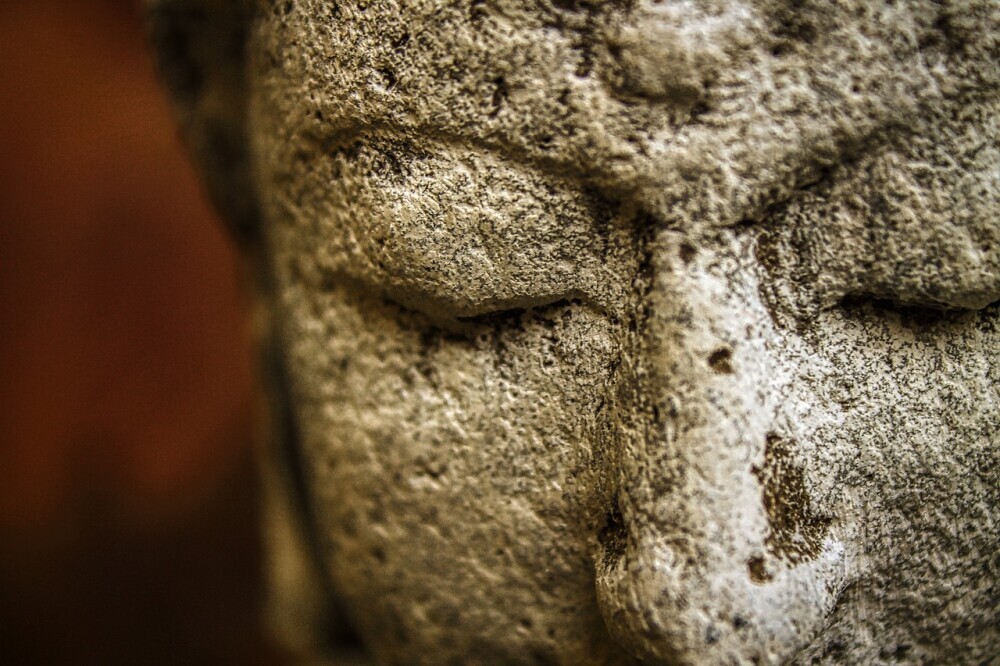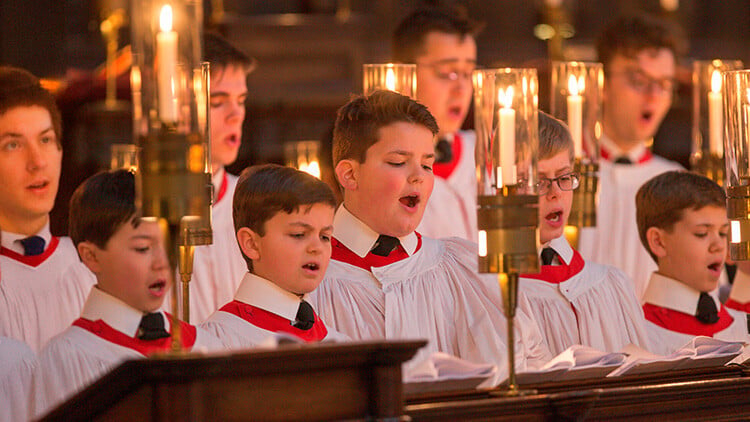I find it easy to get lost in the trees of weekly roundups and not be able to quickly recall what stood out above the rest. This end-of-the-year survey is my attempt to review, organize, and highlight what was most important in 2024.
I’ll start with the “Top 10 Discoveries” related to biblical archaeology, prioritizing items made in Israel and in the biblical eras over those made in surrounding regions and later periods.
This survey also includes a couple of the most controversial stories of the year and other noteworthy reports from Jerusalem, Israel, and the broader biblical world. We have a section of top stories related to tourism, as well as stories related to the antiquities trade and vandalism.
Near the end, we highlight the best print and digital resources we noted this year, as well as the deaths of influential figures. Our survey concludes with links to other top 10 lists.
Top 10 Discoveries of 2024
1. Archaeologists discovered a major royal administrative center south of Jerusalem that dates to the time of Ahaz or Hezekiah. One hundred eighty inscribed jar handles were also found.
2. The oldest gold artifact discovered in Jerusalem may attest to Phoenician presence in the city in the time of King Solomon.
3. An Israeli team proposed a new absolute chronology for Jerusalem in the Iron Age based on a study of 100 samples of organic material. On this basis, they argue that Jerusalem was larger and more urban in the time of David and Solomon. They also date the Broad Wall earlier, to the time of Uzziah instead of Hezekiah.
4. An undisturbed Canaanite shipwreck from the 14th-13th centuries BC was discovered off Israel’s northern coast, making it the oldest shipwreck ever found in deep seas.
5. Archaeologists uncovered a Canaanite temple on the summit of Azekah.
6. A stone quarry with massive building stones was discovered in a northern neighborhood of Jerusalem. It was in use when Herod was carrying out his many construction projects.
7. A seal discovered south of Jerusalem’s Temple Mount depicts a winged figure in Assyrian style and is inscribed “for Yeho’ezer son of Hosh’ayahu.”
8. Archaeologists excavating in the Givati parking lot in the City of David found a well-preserved gold ring inset with a red garnet.
9. The excavation of a rural cemetery in the Jezreel Valley revealed rituals involving the use of fire and beeswax.
10. A cache of rare cultic objects was discovered in a Middle Bronze monumental structure at Tel Shimron.
Most Controversial Stories of 2024
Egypt’s “project of the century”—a reinstallation of the granite cladding on one of the three main pyramids of Giza—was cancelled after criticism.
Stephen Compton claimed that he identified Sennacherib’s siege camps at Lachish and other sites including Jerusalem. The primary article is published in Near Eastern Archaeology magazine (subscription required). Experts disagree.
Noteworthy Stories from Jerusalem
The Times of Israel: “A Tel Aviv University team is using muon detectors to track powerful particles, hoping to build a 3D map of undiscovered tunnels, chambers and fortifications under the holey city,” Jerusalem.
The Temple Mount Sifting Project made a number of notable discoveries this year, including:
- some very rare Byzantine coin weights, pointing to activity on the Temple Mount in the Byzantine period
- a piece of a Byzantine stone chancel screen
- nails from the sandals of Roman soldiers
- a stone fragment with a drilled hole
- a very rare bronze coin minted under Emperor Hadrian’s successor
- a quantitative analysis of pottery from the Iron Age IIB-C, finding that the characteristics are similar to that of the Ophel excavation
Archaeologists used laser scanners and advanced photography to make a digital re-creation of the traditional room of Jesus’s Last Supper.
Work continued at the Pool of Siloam. Andy Cook made a video on location, hinting at new developments. A journal article—the result of which have not yet been picked up in the press as far as I know—claims that the monumental staircase actually functioned as seats and belong to a theater-like entertainment structure featuring a pool used for naval battle reenactments. This was possibly built as part of the quinquennial celebrations to honor Emperor Augustus.
Noteworthy Stories from Israel
Excavations at Caesarea Philippi (Banias) indicate that Herod Agrippa II transformed the sacred cave into a venue for Roman-style banquets.
A new study argues that the three pieces of the Tel Dan Inscription have been positioned incorrectly, resulting in a largely erroneous reconstruction of the text.
An 8th century seal discovered at Hazor depicts a battle between creatures known from Greek and Egyptian mythology.
Archaeologists working at Huqoq in Galilee discovered an extensive underground complex used by Jewish villagers to hide from the Romans during the First and Second Jewish Revolts.
Archaeologists working near the Sea of Galilee uncovered evidence of early axle-based rotation technology.
Excavations uncovered architectural remains of the Roman VIth ‘Ferrata’ Iron Legion military base at the foot of Tel Megiddo.
A hoard of coins discovered in Lod provides evidence for a little-known Jewish revolt against Rome in the 4th century AD.
Archaeologists have discovered a large Early Bronze site on the outskirts of Beit Shemesh.
A study of the magnetic field recorded in bricks burned during Hazael’s conquest of Gath will advance our understanding of the destruction.
The study of plant remains discovered in two temples in the city of Gath is giving insights into Philistine cultic practices.
Excavations at Tel Burna (Libnah?) concluded after fifteen years.
Archaeomagnetic dating of the outer revetment wall at Lachish confirms that the wall was destroyed in the Assyrian siege of 701 BC.
Byzantine Christian pilgrims who traveled to a church in the northern Negev left wall etchings of ships.
Israeli university students are using AI to read corrupted inscriptions in Hebrew and Aramaic.
Other Noteworthy Stories
Israel Finkelstein and Tallay Ornan studied recent finds at Tall adh-Dhahab al-Gharbi, and they suggest that the site is biblical Mahanaim.
Archaeologists found a hidden tomb underneath the Kazneh in Petra that was filled with ancient artifacts and the remains of 12 individuals.
A sword engraved with the name of Ramses II was discovered in ancient military barracks in the Nile Delta.
A royal fort or palace from the reign of Thutmose III was discovered in northern Sinai.
A research study by the University of North Carolina-Wilmington argues the Egyptian pyramids were built along a now dried up branch of the Nile River.
A team from Johns Hopkins believes they have identified alphabetic writing that dates to 2400 BC.
Three bronze shields and a bronze helmet dating to the 7th century BC were discovered at one of the most intact Urartian temples in Turkey.
Excavations in central Turkey uncovered more than 50 Hittite seal impressions from royal family members.
A huge, circular monumental structure from the Minoan period was discovered on Crete.
Alexander the Great’s father Philip, his stepmother, half-siblings, and son were identified in a study of the 4th century BC Royal Tombs at Vergina.
Archaeologists have identified an ancient prison in Corinth’s Roman forum, dating to the 4th-5th centuries AD, based on graffiti found on floor tiles.
Lechaion, one of the harbors of ancient Corinth, is at least 500 years older than previously thought.
Archaeologists found a Roman battering ram at the bottom of the Mediterranean Sea.
A group of students used “computer vision, machine learning, and hard work” to translate a portion of a scroll from Herculaneum and win a $700,000 prize.
Archaeologists believe they have uncovered the 1st-century villa where Pliny the Elder watched Mount Vesuvius erupt.
Archaeologists believe they have found a villa belonging to Emperor Augustus near Mount Vesuvius.
Stories from Pompeii could constitute an entire category of its own:
- The park launched a 100-million-euro project to fund more excavations and renovations.
- They discovered a painting in the House of Leda at Pompeii depicting Phrixus and Helle.
- Some newly discovered frescoes were inspired by the Trojan War.
- They exposed a room with painted blue walls, a color quite rare in Pompeii.
- The city was destroyed not only by a volcanic eruption but by a powerful earthquake.
- They uncovered skeletal remains of a woman carrying a cache of treasure as she fled.
- They discovered a tiny house full of exquisite frescos.
- DNA studies are debunking assumptions about the dead that had been based on the physical appearance and positioning of the casts.
Top Stories Related to Tourism in Israel
A new multi-level sunken entrance pavilion opened for the Tower of David Museum.
After two years and $5 million in renovations, the Herodian Quarter in the Jewish Quarter of Jerusalem’s Old City reopened.
The new National Campus for the Archeology of Israel is now (mostly) open to the public.
A new visitors’ complex opened at Einot Zukim (Ein Feshkha) on the northern Dead Sea.
Top Stories Related to Tourism Outside Israel
A Roman water tunnel, nearly as long as Hezekiah’s Tunnel, was restored at biblical Gadara.
A section of the Grand Egyptian Museum in Cairo opened.
Turkey plans to expand its “Night Museums” project with the goal of setting new records in tourism every year. Tourists can also visit seven historical sites after dark.
The Kestros Fountain at Perga in Turkey is operational after 1,800 years.
The Pompeii Archaeological Park is now limiting the number of daily visitors to 20,000 and using timed personalized tickets with the visitors’ full names.
Tourists were offered the opportunity to participate in a mock gladiatorial fight inside Rome’s Colosseum.
The Megiddo mosaic went on display for the first time ever at The Museum of the Bible in Washington, DC.
Top Stories Related to the Antiquities Trade and Vandalism
A new database was created to catalogue all of the more than a hundred Dead Scroll Scroll fragments that have appeared on the antiquities market since 2002.
The oldest inscription with the Ten Commandments sold for $5 million to a buyer who plans to donate it to an Israeli institution.
The Hamas War caused damage to many archaeological sites in Gaza.
A bomb placed at “Joshua’s altar” on Mount Ebal was discovered before anyone was harmed. A month later, the “altar” was damaged.
A fire that caused damage to the Israel Museum was investigated as an act of arson.
Notable Resources of 2024: Books
1177 B.C.: A Graphic History of the Year Civilization Collapsed, by Eric H. Cline and Glynnis Fawkes (Princeton University Press)
An Asian American Ancient Historian and Biblical Scholar, by Edwin M. Yamauchi (Wipf & Stock)
Ancient Synagogues in Palestine: A Re-evaluation Nearly a Century After Sukenik’s Schweich Lectures, by Jodi Magness (Oxford University Press; open access)
“And in Length of Days Understanding” (Job 12:12): Essays on Archaeology in the Eastern Mediterranean and Beyond in Honor of Thomas E. Levy, edited by Erez Ben-Yosef and Ian W. N. Jones (Springer)
Archaeology and the Bible: 50 Fascinating Finds That Bring the Bible to Life, by Tom Meyer (Institute for Creation Research)
Byblos: A Legacy Unearthed, edited by the National Museum of Antiquities (the Netherlands; open access)
Capernaum: Jews and Christians in the Ancient Village from the Time of Jesus to the Emergence of Islam, by Wally V. Cirafesi (Fortress)
Colonial Archaeology in Palestine in the 1930s: The First Expedition to Lachish, by Yosef Garfinkel (Israel Exploration Society and The Hebrew University of Jerusalem)
Eretz-Israel: Archaeological, Historical and Geographical Studies, volume 35, The Hillel Geva Volume (Israel Exploration Society)
The Essential Archaeological Guide to Bible Lands: Uncovering Biblical Sites of the Ancient Near East and Mediterranean World, by Titus Kennedy (Harvest House)
Hesi after 50 Years and 130 Years: Paying Tribute to the Long Excavation History at Tell el-Hesi, edited by John R. Spencer, James W. Hardin, and Jeffrey Blakely (Eisenbrauns)
Jerusalem the Center of the Universe: Its Archaeology and History (1800–100 BCE), by Israel Finkelstein (SBL Press)
Jerusalem through the Ages: From Its Beginnings to the Crusades, by Jodi Magness (Oxford University Press)
Judah in the Biblical Period: Historical, Archaeological, and Biblical Studies, by Oded Lipschits (De Gruyter)
The King of Bethlehem, by Andy Cook (Experience Israel Now)
Lexham Geographic Commentary on the Pentateuch, edited by Barry Beitzel (Lexham)
Mount Machaerus: An Introduction to the Historical, Archaeological, and Pilgrim Site Overlooking the Dead Sea in the Kingdom of Jordan, by Győző Vörös (ACOR, open access)
The Neo-Assyrian Empire: A Handbook, by Simonetta Ponchia and Giovanni Battista Lanfranchi (De Gruyter)
Petra’s Temple of the Winged Lions, volume 1 and volume 2 (The American Center of Research; open-access)
Sennacherib and the War of 1812: Disputed Victory in the Assyrian Campaign of 701 BCE in Light of Military History, by Paul Evans (T&T Clark)
Teaching Ancient Egypt in Museums: Pedagogies in Practice, edited by Jen Thum, Carl Walsh, Lissette M. Jiménez, Lisa Saladino Haney (Routledge)
Tell es-Safi/Gath III: Studies on the Early Bronze Age, Part 1, edited by I. Shai, H. J. Greenfield, and A. M. Maeir (Zaphon)
Transjordan and the Southern Levant: New Approaches Regarding the Iron Age and the Persian Period from Hebrew Bible Studies and Archaeology, edited by Benedikt Hensel (Mohr Siebeck)
Understanding Syria through 40 Monuments, by Ross Burns (Bloomsbury)
The Underwater Basilica of Nicaea: Archaeology in the Birthplace of Christian Theology, by Mark R. Fairchild (IVP Academic)
The Village in Antiquity and the Rise of Early Christianity, edited by Alan Cadwallader, James R. Harrison, Angela Standhartinger, L. L. Welborn (T&T Clark).
Notable Resources of 2024: Digital Resources
Aren Maeir’s new Massive Open Online Course (MOOC) on ancient Jerusalem was released.
Bible Mapper Atlas produced many free excellent maps, including a poster map of Paul’s travels. They also have a list of the top ten of the year, based on the author’s personal opinion.
Gesher Media created a beautiful full-color map illustrating the “Land of the Messiah.”
Wayne Stiles created a new program entitled Reading the Bible Lands
We released two of our largest photo collections ever this year, both in the Photo Companion to the Bible series: Genesis and Exodus.
Losses This Year
Barbara Aland, former director of the Institute for New Testament Textual Research
Walter E. Aufrecht, a scholar best known for his work on Ammonite inscriptions
John Boardman, a classical archaeologist at Oxford
Ronald E. Clements, professor of Old Testament at Cambridge and King’s College London
Manfried Dietrich, founder of “Alter Orient und Altes Testament” and “Ugarit-Forschungen,” and Ugarit-Verlag
J. Cheryl Exum, longtime professor at the University of Sheffield
Ralph Jackson, long-time curator at the British Museum
Sara Japhet, longtime professor at Hebrew University
Barry Kemp, longtime professor of Egyptology at the University of Cambridge, died on Wednesday.
Edward Lipiński, scholar of Aramaic and Phoenician studies
Ze’ev Meshel, longtime archaeology professor at Tel Aviv University, died last week at the age of 92.
Alan Millard, longtime professor at the University of Liverpool
Stephen Mitchell, author of many books on Asia Minor
Ora Negbi, longtime professor of archaeology at Tel Aviv University
Eliezer Oren, longtime Professor of Bible, Archaeology, and Ancient Near Eastern Studies at Ben-Gurion University of the Negev
Donald B. Redford, Egyptologist
Colin Renfrew, founding director of McDonald Institute for Archaeological Research
John Worrell, director of excavations at Tel el-Hesi
Other Top 10 Lists
Gordon Govier counts down the top ten stories in biblical archaeology for Christianity Today. He also reviews these stories on The Book and the Spade (direct link).
Bryan Windle has identified the top ten discoveries from the world of biblical archaeology.
The Ancient Near East Today highlights ten fascinating discoveries in Near Eastern and Mediterranean archaeology, in no particular order.
Ruth Schuster rounds up the top biblical archaeology stories for Haaretz.
Robert Cargill has created a 15-minute video counting down the top ten biblical archaeology discoveries of 2024.
National Geographic has a story of seven archaeological discoveries, available only to subscribers.
The Greek Reporter reviews the most important archaeological discoveries made in Greece this year.
Archaeology Magazine’s top ten discoveries covers the entire world, including one story from Aswan in Egypt and another from Pompeii.
Art & Object surveys the ten biggest archaeological discoveries from around the world, including bread from Catalhoyuk in Turkey, discoveries at Pompeii, and the Canaanite shipwreck.
CNN reviews fifteen historical and archaeological discoveries of the year.
IOL surveys the top 9 archaeological finds of 2024, including one from Egypt.
ARTnews lists the 12 “most impactful archaeological discoveries” of the year.
Artnet posts the 15 “most surprising archaeological finds” of 2024, with a number from the eastern Mediterranean world.
History proposes 8 “intriguing archaeological discoveries” of the year.
Previous Years
You can revisit the top stories of previous years with these links:
- Top 10 Discoveries of 2023
- Top 10 Discoveries of 2022
- Top 10 Discoveries of 2021
- Top 10 Discoveries of 2020
- Top 10 Discoveries of 2019
- Top 10 Discoveries of 2018
- Top 10 Discoveries of 2017 (and Top Stories and more)
- Top Stories of 2015
- Top Stories of 2014
- Top Stories of 2013 (and more)
- Top Stories of 2012 (and more)
- Top Stories of 2011 (and more)
- Top Stories of 2010 (and more)
- Top 8 of 2008 (and more)
One last thing: you can stay up-to-date year-round by subscribing to our free newsletter (free photos and new resource announcements), reading our blog (latest discoveries), and following us on Facebook, Twitter, and Instagram (daily photos).











 English (US) ·
English (US) ·